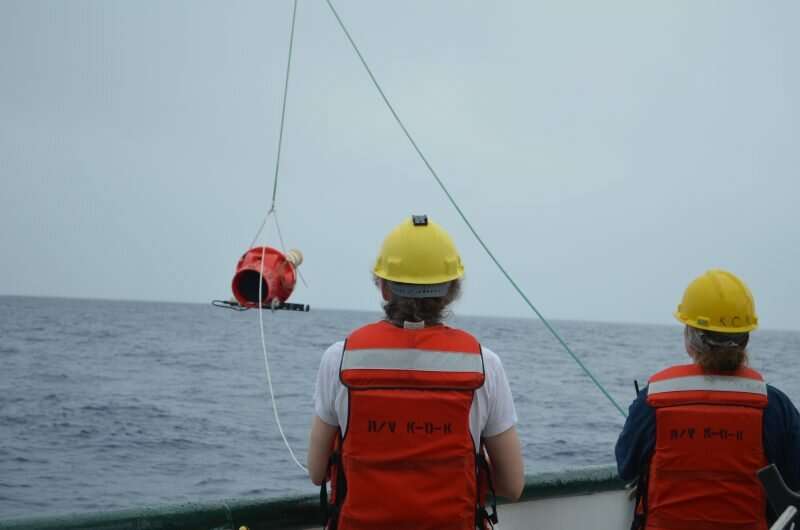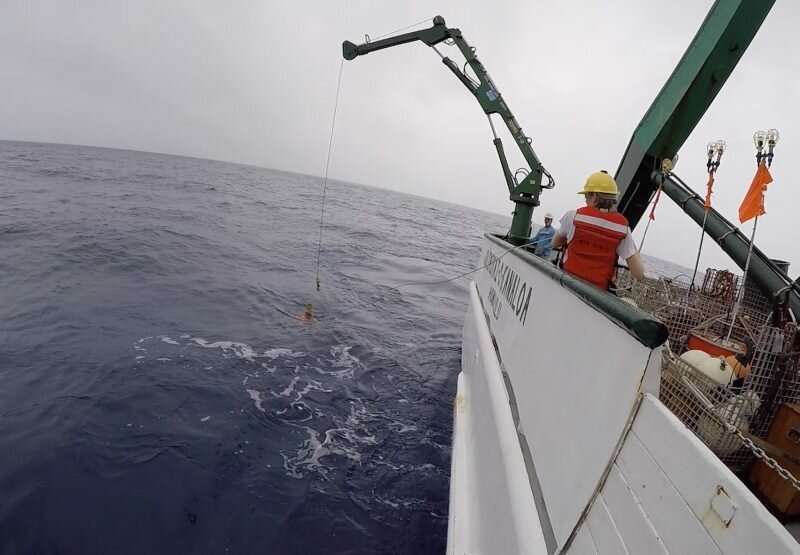Deep diving robots find warming accelerating in South Pacific Ocean waters

New research analyzing data from deep-diving ocean robots and research cruises shows that the coldest, near-bottom South Pacific waters originating from Antarctica are warming three times faster than they were in the 1990s.
"Measuring the warming occurring in these deep ocean waters helps us understand one of the drivers of sea level rise and will help to improve predictions of future sea level," said Gregory C. Johnson, a NOAA oceanographer and co-author of two recently published research papers appearing in the AGU journals Geophysical Research Letters and Journal of Geophysical Research: Oceans. As ocean waters warm, they expand, contributing to rising seas.
New autonomous ocean robots called Deep Argo floats are able to dive down to depths of nearly four miles to collect data. Operating year round, they are improving our ability to monitor how heat is taken up by the ocean. The warming ocean affects not only sea level rise, but also weather patterns and long-term climate.
Deep Argo enhances data from ship surveys
The research combines temperature data taken from ship-based surveys by U.S. researchers and international partners conducted at decadal intervals with the continuous, near real-time data from an array of 31 Deep Argo floats, most of which were designed, built, and deployed by Scripps Institution of Oceanography scientists.

The ship-based data show that deep ocean temperatures rose an average rate of 1-thousandth of a degree Celsius per year between the 1990s and the 2000s and that rate doubled to 2-thousandths of a degree per year between the 2000s and the 2010s. The Deep Argo floats reveal a tripling of the initial warming rate to 3-thousandths of a degree per year over the past four-plus years.
This warming rate of near-bottom temperatures is only a fraction of that of the surface ocean, but is striking for an area of the ocean long considered more stable.
This new research underlines the importance of expanding Deep Argo to improve the timeliness and accuracy of observations.
Working with Paul G. Allen Family Foundation, NOAA is poised to deploy Deep Argo floats in the Atlantic Ocean. With funding from the late visionary philanthropist, NOAA scientists will travel aboard R/V Petrel to deploy a large array of Deep Argo floats in the international waters off Brazil next year.
More information: Sarah G. Purkey et al. Unabated Bottom Water Warming and Freshening in the South Pacific Ocean, Journal of Geophysical Research: Oceans (2019). DOI: 10.1029/2018JC014775
Gregory C. Johnson et al. Deep Argo quantifies bottom water warming rates in the Southwest Pacific Basin, Geophysical Research Letters (2019). DOI: 10.1029/2018GL081685
Journal information: Geophysical Research Letters
Provided by American Geophysical Union
This story is republished courtesy of AGU Blogs (http://blogs.agu.org), a community of Earth and space science blogs, hosted by the American Geophysical Union. Read the original story here.




















